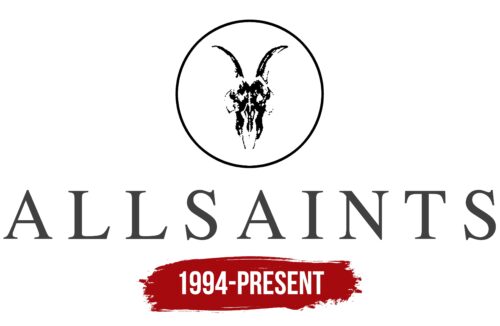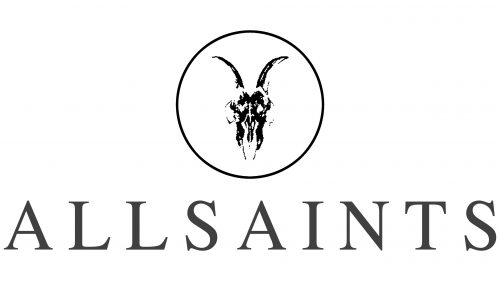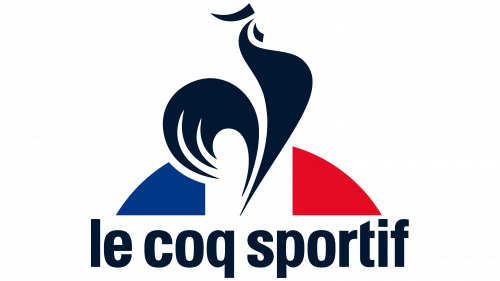The AllSaints logo is one of the most recognizable in the fashion world. It includes just a few elements, each possessing its mysterious allure. It’s hard to overlook, as this visual symbol is considered one of the most progressive and “free” among all British fashion brands. Its originality makes it memorable.
The emblem’s graphic structure and uniqueness perfectly convey the core principles of production. Every element reflects the company’s reliability, the high quality of its men’s and women’s clothing, and the distinctiveness of all its collections.
Motifs of restraint and subtle nods to classic styles are skillfully intertwined with a rock-and-roll spirit. This dynamic and elegant identity embodies the mood of an entire generation, adding rebellious and free-spirited touches to the brand’s image.
AllSaints: Brand overview
The story of AllSaints began in London in 1994 when Stuart Trevor founded a menswear-focused business. All Saints Road inspired the brand’s name in Notting Hill, a street known for its bohemian vibe and music scene. Trevor wanted to create a brand that reflected the essence of this street and its people.
In 1997, the first store opened on Founders Street in London. The boutique quickly gained popularity with local fashion enthusiasts for its unique blend of vintage chic and rock aesthetics. The store’s industrial-style interior, featuring old sewing machines, became a hallmark of the brand.
Initially, the company focused solely on menswear. It gained a reputation for stylish, high-quality leather jackets and pants, with low-rise jeans becoming especially popular in the late 1990s and early 2000s. The year 2004 marked a major shift with the launch of its first women’s collection. This collection quickly gained popularity for its distinct combination of sophistication and rock-inspired design.
In 2006, leadership passed to Stephen Craig and Kevin Stanford. Under their direction, the brand began expanding aggressively, opening several new stores across the UK and planning for global growth.
A key moment in its history came in 2009, when it opened its first U.S. location in New York, marking the start of its expansion into the American market. The unique style quickly caught on with U.S. customers, leading to the opening of more stores in major cities.
In 2010, the company launched its online store, allowing the brand to reach a global audience and helping fuel continued growth. However, 2011 was challenging, as the company faced financial difficulties and was on the brink of bankruptcy. Lion Capital and Goode Partners stepped in with investments that stabilized the financial position.
In 2012, Wil Beaven joined as creative director. He updated the brand’s image while maintaining its signature style, appealing to a broader audience by introducing more refined and minimalist designs.
In 2013, the brand launched its accessory line, with the bags quickly becoming popular for their high quality and unique designs.
By 2015, the company introduced its first full shoe line. Like clothing, shoes combine elegance with ruggedness, and sneakers have become a favorite among fans.
In 2016, the brand entered the Asian market, opening its first stores in South Korea and Japan. This marked an important step in global expansion.
In 2017, the company introduced its first fragrance line. The trio of scents received positive reviews for capturing the distinct style.
Growth continued in 2018, with more stores opening in Europe and Asia and the launch of the first full swimwear line.
In 2019, the company celebrated its 25th anniversary with a special collection inspired by its archives, highlighting its commitment to heritage and unique style.
In 2020 and 2021, the company adapted to new market realities by expanding its casual wear offerings and strengthening its online presence. By 2022, the brand had over 250 stores in 26 countries, continuing to refine its aesthetic by blending modern fashion with vintage and rock influences.
At the start of 2023, the company remained known for its distinct style and craftsmanship, standing as one of the top British fashion labels. The business continued to expand to accommodate changing consumer and fashion trends.
Over nearly 30 years, the brand has grown from a small London shop into a major global fashion name while staying true to its rock-inspired character. Despite financial challenges and leadership changes, the company has maintained its position as a prominent and recognizable British fashion label.
Meaning and History
What is AllSaints?
This British clothing company stands out with its bold style inspired by rock culture. The brand, known for its distressed leather jackets, offers collections for both men and women, predominately black, gray, and muted tones that create a melancholic mood. Their unique cuts and design elements give the pieces an urban sophistication with a touch of rebellion. The brand’s stores are characterized by industrial decor — exposed brickwork and vintage sewing machines — creating an atmosphere that perfectly complements their style. In recent years, the company has expanded its range, adding home goods and perfumes while maintaining its signature dark romantic aesthetic that appeals to those who appreciate a refined grunge style.
1994 – today
The AllSaints logo conveys a powerful, minimalist message that perfectly aligns with the brand’s spirit. It is built around three key elements: the name, the circle, and a symbol that sparks intrigue and evokes deep associations.
On a white background, bold black capital letters forming the brand’s name stand out with their strictness and simplicity. This reflects the edgy and somewhat dark style that has become recognizable for its rebellious character. The letters are elongated and sharp, symbolizing the brand’s confidence, strength, consistency, and reliability. This style was originally aimed at a male audience, which is evident in every logo element. However, as the brand evolved and introduced women’s lines, this style became universal and appealing.
A crucial element of the logo is the circle, at the center of which is the symbol of a ram’s skull. This element carries deep meaning and symbolism. The ram, depicted as a skull, is traditionally associated with strength and resilience, emphasizing the brand’s core concept: clothing for those who aren’t afraid to stand out, firmly hold their ground, and seek freedom in their style choices. The skull symbolizes eternity and timelessness, which is important for a brand that strives to transcend fleeting trends and create more than just fashion.
The circle around the skull creates a sense of completeness and unity. This element holds the composition together, highlighting the importance of each symbol in the emblem. It balances the skull symbol’s wildness and the form’s precise geometry.
This design, combined with its dark palette and symbols of strength and independence, reflects the brand’s essence. The logo has become a symbol of boldness, style, and steadfastness, underscoring the individuality of everyone who chooses this brand.





